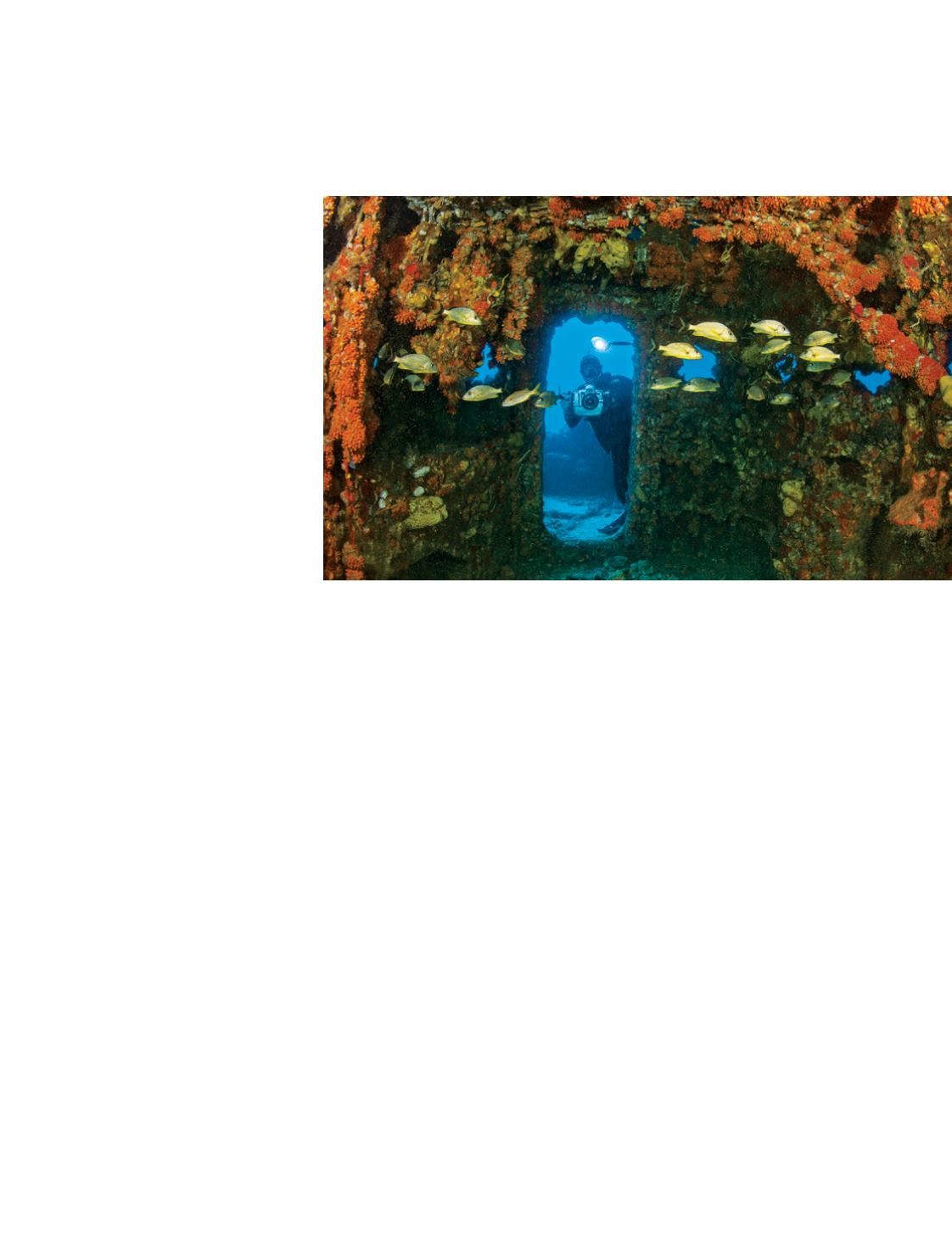
10
|
FALL 2013
FROM THE SAFETY STOP
//
P U B L I S H E R ’ S N O T E
I
find it hard to even write the
word “respect” without hearing
the Aretha Franklin tune in
my head (“sock it to me, sock
it to me”). As divers, one significant
association we should have with that
word is our relationship with the sea
and the coral reef.
This occurred to me recently
as I read a long and active thread
on an email list hosted by the
National Oceanic and Atmospheric
Administration (NOAA). Most people
who add their voices to the discussions
held there are extraordinarily
knowledgeable scientists speaking
about their particular marine biological
passions. I learn a lot just by lurking,
hoping that by osmosis I can become a
better-informed citizen of this blue planet.
The director of Alacranes Reef National Park in Yucatan,
Mexico, initiated this particular thread. The park administration
is writing a new management plan, and the director sought
comments on an idea to obligate divers to stay five feet away
from the coral reef to prevent damage.
As an underwater photographer, I find this recommendation
troubling. Besides the obvious consideration that quality
underwater photography can’t be done at a distance of five
feet away, and macro photography can’t be done at all, a larger
issue evolved in the ensuing conversations. Is the degradation
we see in our coral reefs brought about by scuba divers?
The following are a few of the scores of fascinating
insights proffered by those who are in a position to
speculate with authority:
“I regard the proposed ‘keep your distance’ rule as not only
misguided but counterproductive, sure to derail important
observations and documentation of reef life. In the 21st century,
divers who value ‘looking, not taking’ are among the ocean’s
best friends and most effective ambassadors. They are direct
witnesses to the swift changes that have taken place in recent
years and often document behavior and make observations
and discoveries of great scientific value. They also provide
knowledgeable, caring voices for corals, fish and other forms of
ocean life that cannot vote or speak for themselves. Damages
in the form of an occasional snapped branch or nudged sponge
are small compared with the impact of an improperly placed
anchor or the removal of fish, lobsters, conchs or other living
elements that make coral reefs prosper.” — Sylvia Earle, marine
conservationist and National Geographic Explorer in Residence
“In most parts of the world, especially the Caribbean,
diver damage is an undetectable signal compared with other
human-induced impacts or natural disturbances (storms,
bleaching, ocean acidification, overfishing and others). Yes,
it’s easy to point a finger at a diver touching the bottom or a
wayward gauge, but look at what happens in one winter blow
— not even a hurricane — or from turtles grazing on sponges
and you’ll see more damage than divers cause in a year. I’m
not saying we shouldn’t encourage good behavior, proper
buoyancy control and a better understanding of the marine
ecosystem, but realistically, putting significant time and effort
into diver regulation is not going to solve any problems.”
— Lad Akins, Director of Special Projects, Reef Environmental
Education Foundation
“Some divers and dive operators find reducing diver impact
appealing, because it is something they can do to help. I’m all
for that. The problem is that diver impact, while significant
for some small areas of reef, is one of the most minor impacts
on the world’s coral reefs. … If we want to save reefs, we
must stop global warming and acidification. We must also
reduce local impacts — primarily overfishing, nutrification,
chemical pollution, coral disease and introduced species such
as lionfish. … Climate change is the 800-pound gorilla in
the room. If we don’t do anything about that, we could stop
R-E-S-P-E-C-T
b y S t e p h e n F r i n k
TYRA ADAMSON


